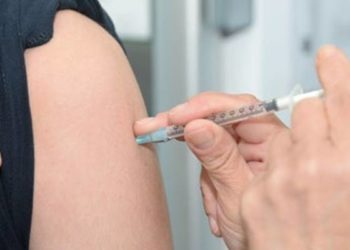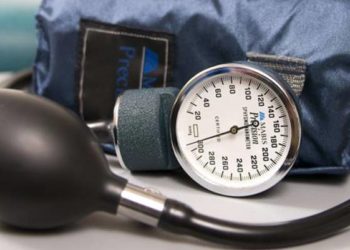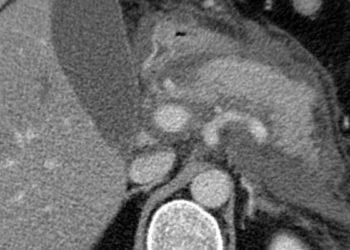2 Minute Medicine Rewind April 27 – May 4, 2014
Image: PD
In this section, we will highlight the key high-impact studies, updates, and analyses published in medicine during the past week.
Diagnosis of Childhood Tuberculosis and Host RNA Expression in Africa
Tuberculosis (TB) is difficult to diagnose microbiologically in children, as the majority of childhood cases produce negative smears and cultures for Mycobacterium tuberculosis, nonspecific radiographic findings, and difficult to interpret tuberculin and interferon-γ-release assays. Investigators used a genomewide RNA expression assay to assess whether transcriptional signatures could be used for TB diagnosis. Blood samples from a discovery cohort of 1356 children with suspected TB were used to identify a 51-transcript signature that was used for formulating a risk score for TB. This score was then validated with a cohort of 1599 children and found to have a sensitivity of 82.9% (95% confidence interval [CI], 68.6 to 94.3) and a specificity of 83.6% (95% CI, 74.6 to 92.7) for the diagnosis of culture-confirmed tuberculosis. For comparison, the sensitivity of the Xpert MTB/RIF assay for cases of culture-confirmed TB was 54.3% (95% CI, 37.1 to 68.6). This study therefore shows that RNA expression signatures hold promise for diagnosis of childhood TB.
Survival with Cardiac-Resynchronization Therapy in Mild Heart Failure
The Multicenter Automatic Defibrillator Implantation Trial with Cardiac Resynchronization Therapy (MADIT-CRT) demonstrated that in patients with mild heart failure and electrocardiogram (ECG)-confirmed left bundle-branch block, early intervention using cardiac-resynchronization therapy with a defibrillator (CRT-D) significantly reduced the risk of non-fatal heart-failure events when compared to using defibrillator therapy alone over a 2.4 year period. In this post-trial follow-up, investigators sought to understand the long-term mortality effects of CRT-D. The study assessed all 1691 surviving patients as well as 854 additional patients from post-trail registries, and found that at 7 years after enrollment, the all-cause mortality rate among patients with left bundle-branch block was 18% for patients assigned to CRT-D, compared with 29% for patients who received defibrillator therapy alone (adjusted hazard ratio in the CRT-D group 0.59, 95% CI 0.43-0.80, p<0.001). This difference was no longer significant when considering patients without left bundle branch block (adjusted hazard ratio for all-cause mortality 1.57, 95%CI 1.03-2.39, p = 0.04). This study therefore shows that early CRT-D may produce a long-term survival benefit among patients with mild heart failure and left bundle-branch block.
Millennium Development Goal 4 (MDG 4) articulates the goal of reducing child mortality by two thirds from 1990 to 2015. This study sought to evaluate the global progress in meeting this target. Investigators extrapolated estimates of child mortality for several age groups using datapoints from survey, census, vital registration, and sample registration and then further used regression analysis to calculate the effects of income per person, maternal education, and other factors on under-5 mortality rates. This study found that an estimated 6.3 million children under-5 died in 2013 from 17.6 million in 1970 (64% reduction). The rate of decrease in mortality has increased when comparing the period 2000-2013 to 1990-2000, a trend that held true in 43 of 48 sub-Saharan African countries. Comparing 1990 and 2013, rising birth rates led to 1.4 million more child deaths, where as rising income per person and maternal education resulted in an estimated decrease of 0.9 million and 2.2 million child deaths, respectively. This study showed that only 27 developing countries are likely to achieve MDG 4. However, it is promising that, likely due to maternal education and rising incomes, the rate of mortality decrease has been accelerating.
Insulin analogues are touted as alternatives to human insulin that can reduce the rate of hypoglycemic complications, however they have not been thoroughly tested before in type 1 diabetics with recurrent severe hypoglycemia. In this randomized controlled trial, 159 patients, who had reported two or more past episodes of severe hypoglycemia in the previous year, were randomized to receive either basal-bolus therapy with either insulin analogues (detemir and aspart) or human insulin. From May 2007 to October 2009, there were 136 reported severe hypoglycemic episodes in the human insulin group compared with 105 episodes in the insulin analogue group, which translates to an absolute risk reduction of 0.51 episodes (95% CI 0.19 – 0.84) per patient-year and a relative rate reduction of 29% (95% CI 11-48, p = 0.010) when using insulin analogues. This study therefore shows that in comparison to using human insulin, treatment with determir and aspart results in fewer severe hypoglycemic episodes in type 1 diabetics who have a history of frequent severe hypoglycemic complications.
A Randomized Trial of Protocol-Based Care for Early Septic Shock
The seminal 2001 Rivers et al. paper reported that utilizing a 6-hour protocol for early goal-directed therapy (EGDT) significantly reduced mortality rates in patients with sepsis. However, since this initial study, questions have been raised as to whether all elements of such a protocol are necessary to achieve the same level of benefit. In this randomized trial across 31 emergency departments, 439 patients were randomly assigned to receive either the 6-hour protocol-based EGDT, protocol-based standard therapy (that did not require placement of a central venous catheter, inotropes, or blood transfusion), or usual care by the beside provider. The three treatment groups differed significantly with regards to use of central venous pressure, oxygen, intravenous fluids, vasopressors, inotropes, and blood transfusions. After 60 days, the EGDT protocol group had 92 deaths (21.0%) compared with 81 (18.2%) and 86 (18.9%) deaths in the protocol-based standard therapy and usual care groups, respectively. There was no significant difference in 90-day mortality, 1-year mortality, or the need for organ support. This study therefore showed that using the EGDT protocols did not seem to offer any additional mortality benefit compared to protocol-based standard therapy as well as usual care by a bedside provider.
©2012-2014 2minutemedicine.com. All rights reserved. No works may be reproduced without written consent from 2minutemedicine.com. Disclaimer: We present factual information directly from peer reviewed medical journals. No post should be construed as medical advice and is not intended as such by the authors or by 2minutemedicine.com. PLEASE SEE A HEALTHCARE PROVIDER IN YOUR AREA IF YOU SEEK MEDICAL ADVICE OF ANY SORT. Content is produced in accordance with fair use copyrights solely and strictly for the purpose of teaching, news and criticism.









